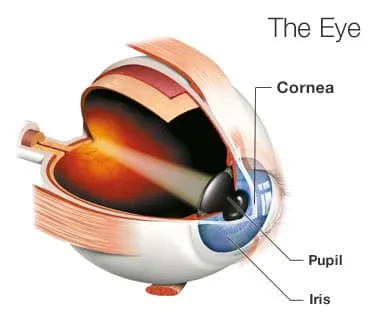Light is crucial for vision. It bounces off objects and enters your eyes, which allows you to see. But sometimes, it’s the source of vision problems, like halos or glare.
Halos are bright circles that surround a light source, like headlights. Glare is light that enters your eye and interferes with your vision.
They can be:
Uncomfortable. When you try to see in too-bright light, you may squint and look away. Your eyes may tear up.
Disabling. Glare can sometimes hurt your vision. Light scatters inside your eye, and you can’t see sharp images. With disabling glare, the loss of contrast is often worse in dim, not bright, environments.

What Causes Them?
Halos often show up when you’re in a dim or dark place. Glare is more likely in the daytime. They're a normal response to bright lights, but deeper problems can also bring them on. Causes include:
Cataracts. Normally, the lens at the front of your eye is clear. Light can pass through easily. A cataract scatters rather than focuses light. This blurs your vision. Halos are a common symptom. Glare might make you think that lights are too bright.
Commoneye problems. Your retina is the thin lining in the back of your eye. It plays a crucial role in vision. If light can’t focus on it, you may start to see halos or glare.
Conditions that can cause this include:
- Nearsightedness (hard to see things that are far away, often worse at night)
- Farsightedness (hard to see things nearby due to the natural shape of your eyeball)
- Astigmatism (blurred vision due to irregular shape of the cornea, the front surface of the eye)
Eye procedures. Radial keratotomy (an older form of refractive or vision corrected surgery, could be to blame. More modern forms of LASIK are far less likely to cause these problems, although even with modern lasik you may be slightly more sensitive to glare and halos.
Sometimes your surroundings cause glare. If you face the sunset when you drive, or if you look at a clear, flat surface (think of a snow-covered field or a beach) on a sunny day, you may see spots of glare. Laser pointers shined in your eye can also create harmful glare.
Camera flashes can leave temporary images in your vision, called flash blindness. These fade away on their own.
How Do I Treat Them?
You may be able to make these better on your own if your condition is mild enough. If not, you should see an eye doctor.
Some simple steps to reduce glare:
Sunglasses. They can help during the day. Polarized shades can keep your eyes safe from certain types of glare, like reflections from water.
Vehicle visor. Use this to keep direct sunlight out of your eyes.
Lenses. Ask your eye doctor about special types that can help reduce glare and correct eye problems.
Treatment for halos and glare includes:
Fix your vision. If you’re nearsighted or farsighted, your eyes don't focus light on your retinas like they should. Glasses or contact lenses can help.
Tell your eye doctor if glare or halos bother you. This will help the doctor find the right type of correction. Sometimes even with the best glasses or contacts, you may be more sensitive than others to glare.
Get rid of cataracts. Early on, you may be able to reduce the effects with glasses. Use sunglasses to lessen glare.
Surgery is the common, effective way to treat more vision-impairing cataracts. During the surgery, the eye doctor removes your cloudy lens and usually replaces it with an artificial lens.
Multifocal replacement lenses are more likely to cause halos and glare than monofocal ones. But they also help you see both near and distant objects.
Discuss the type of lens you need before the procedure. Ask your doctor about the risk of halos and glare after the surgery.
